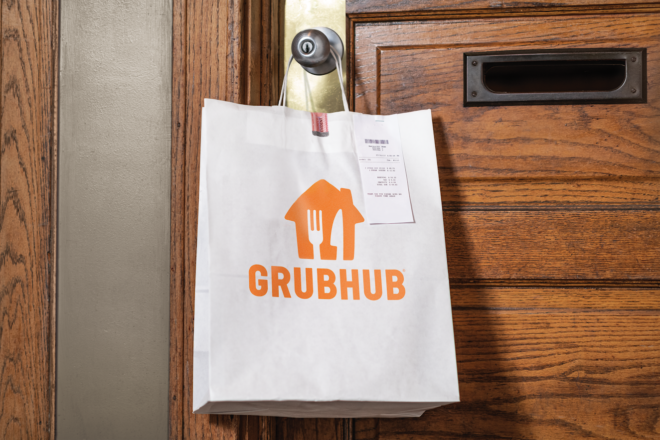How to open a restaurant in Florida
Editorial Team
9 min read
Florida, the “Sunshine State,” offers nearly-perfect weather and endless activities. Whether you’re after a trip to the beach, a day at a theme park, or a wildlife adventure, there’s a never-ending list of places to visit, sites to see, and food to sample. And, for restaurateurs, there’s opportunity aplenty.
Florida is home to a broad range of cuisines and eateries. In fact, according to the National Restaurant Association, Florida has more than 48,000 restaurant locations generating a whopping $77 billion in revenue. What’s more, Florida welcomed an estimated 140.6 million visitors (not including residents) in 2023–that’s a lot of potential restaurant guests.
So, if you’re thinking of opening a restaurant in Florida, we’ve got you covered with information on how to open a restaurant in Florida. Here’s a list of foundational items you’ll need to consider or have nailed down when opening a restaurant in Florida.
1. A location
Figuring out the ideal locale for your restaurant often depends on where you’d like to live and work–assuming you’ll be hands-on in running the day-to-day operations. In fact, the location you choose and understanding your local market can be crucial to the brand, theme, and food you choose for your restaurant.
If you’ve not yet decided on the best-fit Floridian city for your restaurant and you’re open to exploring options, consider these interesting factoids about some of Florida’s most popular cities and a few up-and-comers:
- Orlando, the “theme park capital of the world,” drew more than 74 million visitors in 2022
- Miami is filled with A-list beaches, nightclubs, and a bustling foodie scene
- Tampa, with its thriving nightlife, professional sports, and an abundance of entertainment options, is an up-and-coming scene for young professionals
- The affluent neighborhoods of West Palm Beach offer lots of opportunity for new upscale dining offerings
- With its beautiful beaches and family-oriented attractions, Destin draws a steady stream of tourists and a high demand for family-friendly dining options
- Panama City Beach offers 27 miles of vibrant beaches with family-oriented activities galore–and lots of opportunity for family-friendly dining
Once you’ve selected your city, consider these questions when looking at possible venues:
- Is the area well populated?
- Is it a prime traffic location? If so, is there easy in-and-out access and sufficient parking?
- Is the restaurant accessible to foot traffic?
- Is there space for outdoor dining?
- What kinds of businesses surround the venue? Do those businesses draw consumers who’d be interested in the cuisine you plan to offer?
READ: How to find a good location for your business
2. A theme, a brand, and a menu
Developing the theme of your restaurant typically drives your restaurant’s brand and, of course, its menu. Your menu should, in turn, reflect your restaurant’s theme and offer guests plenty of variety without overtaxing your back-of-house staff.
Be sure to consider these questions:
- Is there a particular cuisine or restaurant theme you’re passionate about?
- What cuisine do your competitors offer? What foods or drinks might help you stand out from the competition and draw in local diners and visitors?
- Do you know what kind of food and dining experience locals and visitors are looking for?
- Do you envision a sit-down-only restaurant? Will you offer on-the-go options like curbside pickup or a food truck?
When you’re ready to design the actual menu for your guests, be sure to create sections within your menu, so it’s easy to scan. Consider dividing items by categories like appetizers, soups and salads, and entrees–or organize them by protein or style.
READ: How to create a restaurant menu
3. A business plan and financing
One of the most significant steps in starting a business anywhere is writing a business plan. Your restaurant’s business plan should serve as a blueprint, turning the idea in your head into a document that guides you, your team, and your investors. A business plan is essential to securing financing and even opening a business bank account.
Of course, opening a restaurant can come with a high price tag, and figuring out just how much it costs to open a restaurant can be tricky. Fortunately, with some research and a little creativity, finding the financing you need can be within reach. Here are a few ideas for sourcing your funding, for starters:
- Friends and family
- Online lenders and Small Business Administration Funding Programs
- Florida state grants
- Food incubators
- Investors
- Crowdfunding
- Banks and traditional small business loans
Be sure to peruse these posts for more information on how to finance a restaurant or open a restaurant with no money.
4. Permits and licenses
Once you’ve decided on the kind of restaurant you’d like to open in Florida, you’ll need to register your business with the Florida Department of Revenue. Opening a restaurant also requires a variety of licenses and permits before you can serve the public. The licenses and permits needed to open a restaurant in Florida will depend on local regulations, the services you intend to provide, what type of restaurant you want to open, and other considerations.
Start by reviewing retail food establishment requirements provided by the Florida Department of Agriculture and Consumer Services (FDACS). For more information on how you can obtain your food establishment permits, visit the FDACS website.
If you intend on selling alcohol in your restaurant, you’ll review what’s required by the Florida Department of Business and Professional Regulation (DBPR). Other licensing requirements for your restaurant can be found on the DBPR’s licensing portal.
Knowing what health codes you’ll need to maintain is also essential to starting a restaurant. The Florida Department of Health (FDOH) can provide you with additional information to comply with Florida’s health codes for restaurants. Review the FDOH’s food safety and sanitation requirements for more information on how you can keep your restaurant up to code. The FDOH also provides everything you need to know about commercial kitchen requirements in Florida.
5. A POS system
Knowing what to look for in a POS system can mean the difference between streamlined, efficient operations and a restaurant that’s constantly focused on operational hurdles. Diners, whether locals or out-of-towners, need alternative ways to pay for their meals, so it’s essential to choose a restaurant POS system that helps your restaurant accept many different payment options, including:
- Traditional methods, like cash, debit cards, and credit cards
- Contactless options
- QR code payments
- Mobile payments
- Online ordering
Be sure that your POS system is flexible enough to accommodate the spatial demands of your eatery. For instance, Clover offers several different devices–from the Go and the Flex to the more robust Station Duo–designed to help you customize a system that fits your space and your needs. What’s more, the Clover Kitchen Display System, a simple device that uses order management software to connect your front-of-house and online ordering platforms to your kitchen staff, can keep your kitchen humming and your orders more accurate.
As you’re considering your POS system, it’s important to note, too, that food and beverages sold in Florida are subject to a 6% state sales tax. That means you’ll need to find a way to manage regular sales tax payments. Fortunately, with a Clover POS and apps like Automated Sales Tax, collecting and paying sales tax has never been easier.
6. A trained team
Hiring restaurant staff is a big part of the equation when you’re staffing your new restaurant. But, it’s just the starter. You’ll also need to determine how you want to manage your staff on a day-to-day basis. For instance, you’ll need to consider how to:
- Build your restaurant leadership team
- Set up rotating schedules so employees work a variety of days and times (better for shift and pay equity)
- Structure your pay policies to include industry standards, such as the 80/20 tip rule
- Choose the right software to help with employee management, measure performance, and create incentives
Fortunately, Clover App Market offers numerous apps to help lighten your operational load such as Payroll by ADP, the industry standard for payroll processing.
One more item to consider when training your staff is Florida requires all food service employees to be trained on proper food handling and hygiene practices every three years, according to the DBPR. Only division-approved training programs are accepted as meeting the training requirement. This document provides more information on Florida’s food service employee training requirements.
READ: Back-of-house job descriptions and duties
7. A marketing plan
What’s a restaurant without diners? To bring guests into your eatery, you’ll need a plan. That’s where marketing becomes absolutely critical to the success of your restaurant. You start by writing a marketing plan that outlines actionable steps you can take toward achieving your restaurant’s goal. Writing an effective marketing plan can help you allocate the resources you need to reach, convert, and retain customers.
When opening a new restaurant, you should also consider how you’ll mark its opening–whether with a grand opening or a soft opening. Check out these ideas for a restaurant’s grand opening. And, be sure to set aside whatever funding and time you can to develop strategies to help you grow your restaurant. If you have little to no money for a marketing budget, no worries. Simply check out these marketing ideas for small businesses with zero budget.
READ: Stellar marketing and advertising examples to inspire you
While setting up a restaurant in Florida, or anywhere, can be an adventure, Clover POS systems are designed to help entrepreneurs and restaurateurs jump start, manage, and grow their businesses. To learn more about how Clover’s suite of tools can help your restaurant succeed in Florida or any where you choose, reach out to a Clover Consultant.
This information is provided for informational purposes only and should not be construed as legal, financial, or tax advice. Readers should contact their attorneys, financial advisors, or tax professionals to obtain advice with respect to any particular matter.
Related Posts
5 tips from Grubhub for building a successful delivery menu
How to ask for feedback from customers
Popular Topics
Stay in touch
Sign up and learn more about Clover.
Thank you for your subscription!
More posts about starting a small business
eBook





